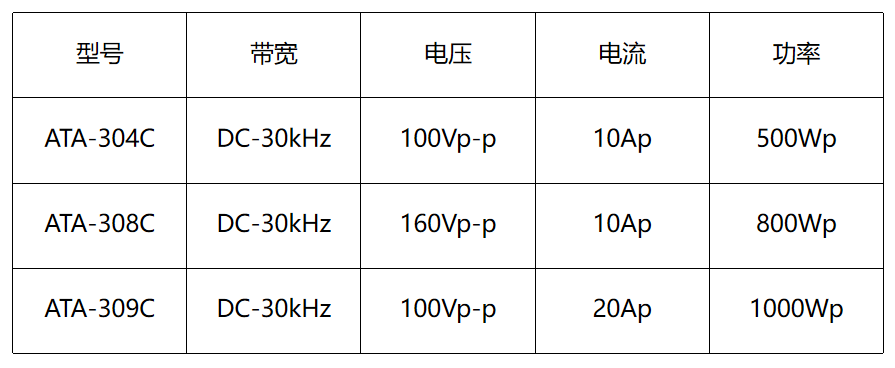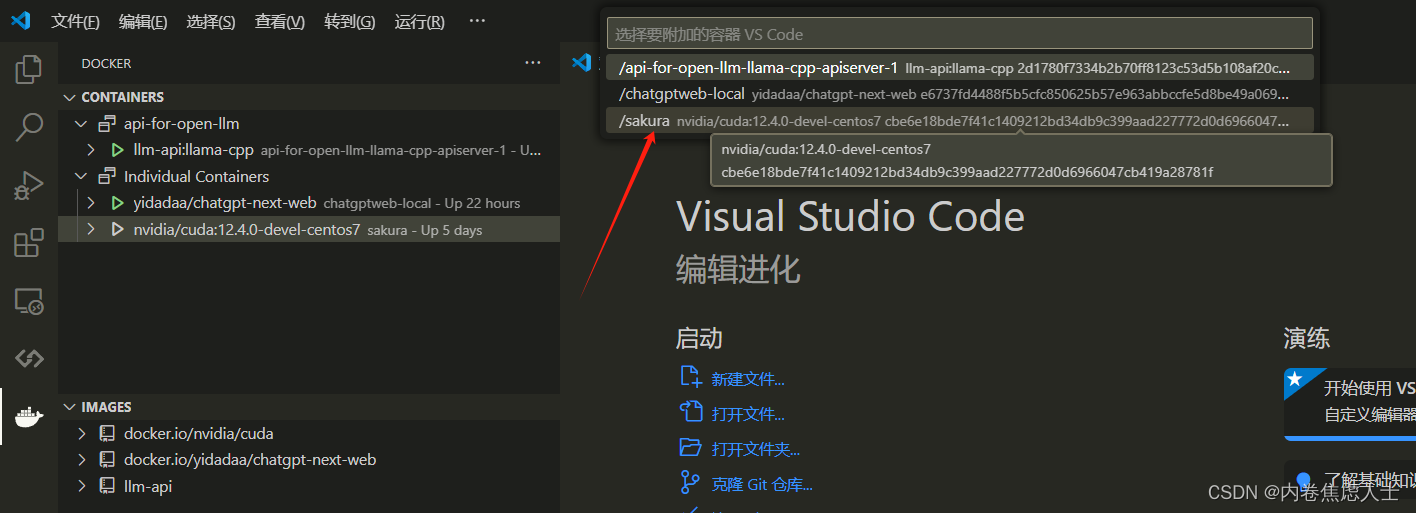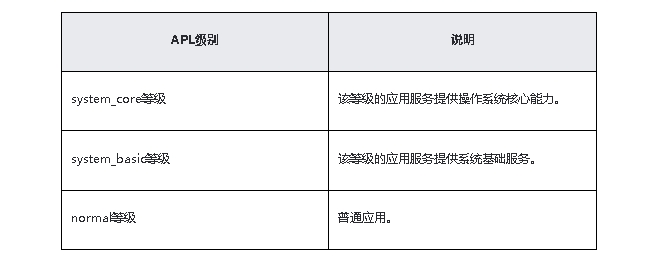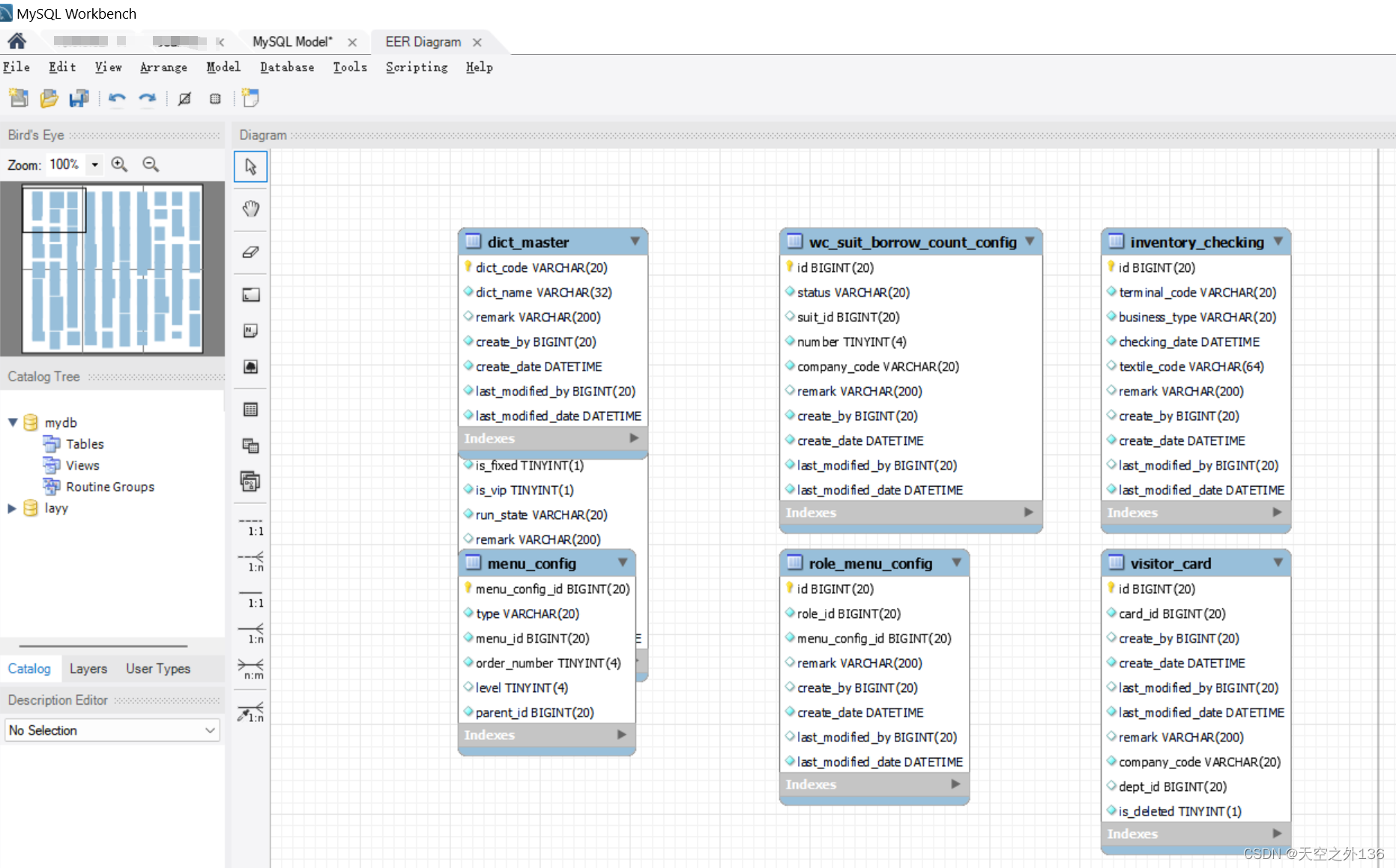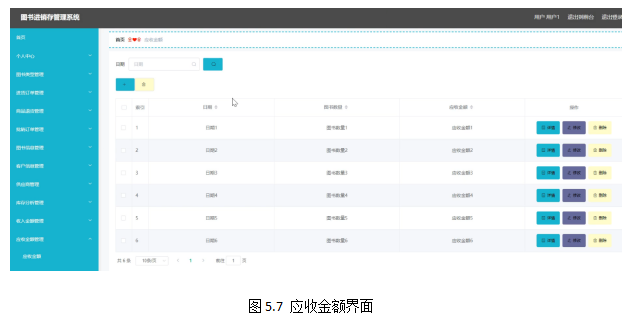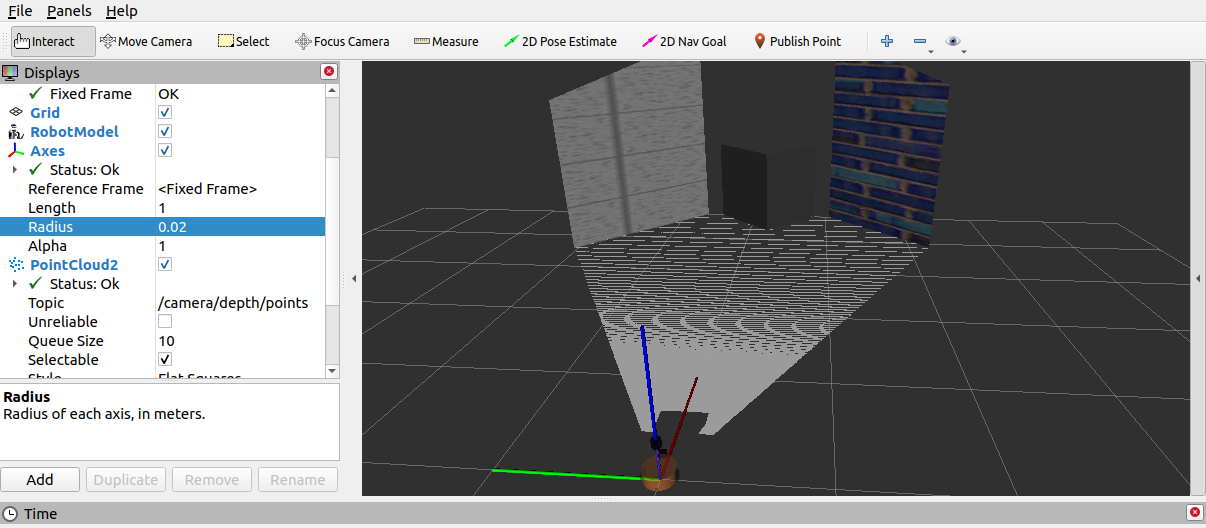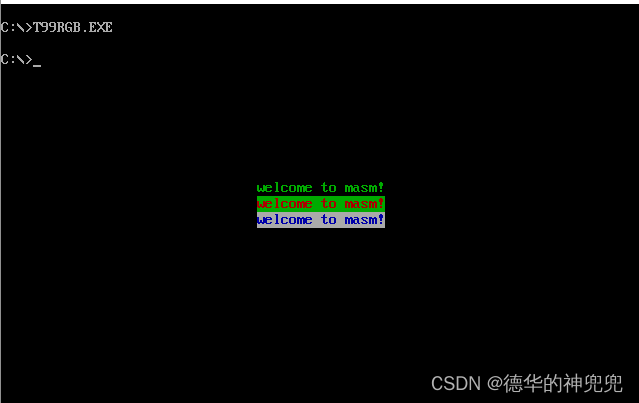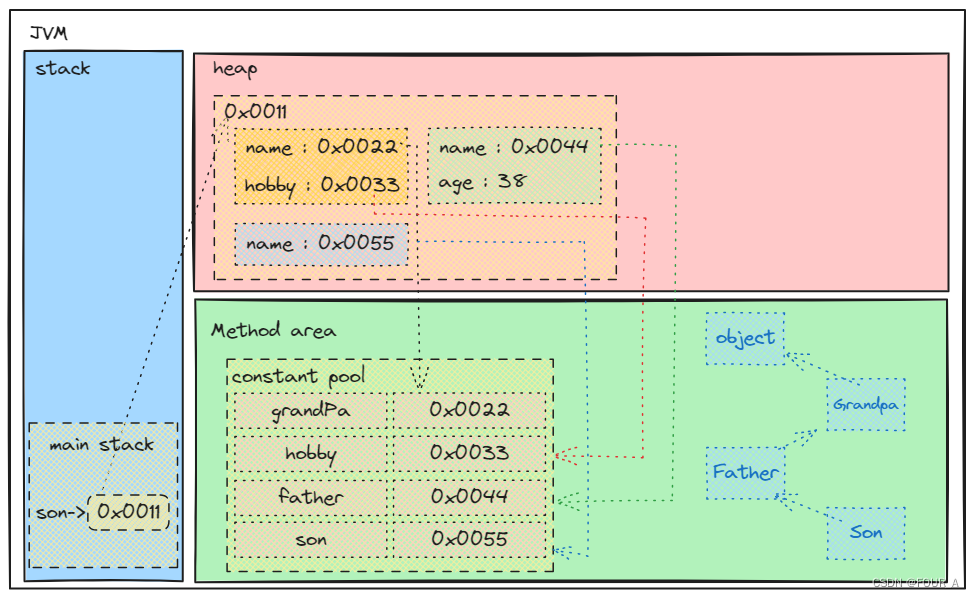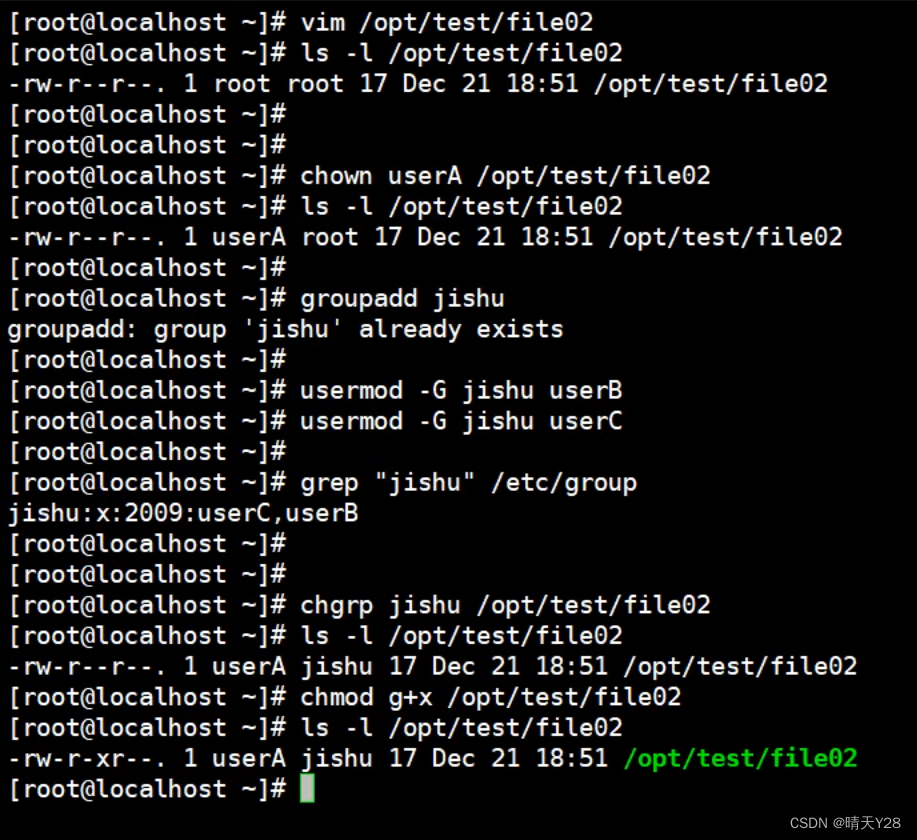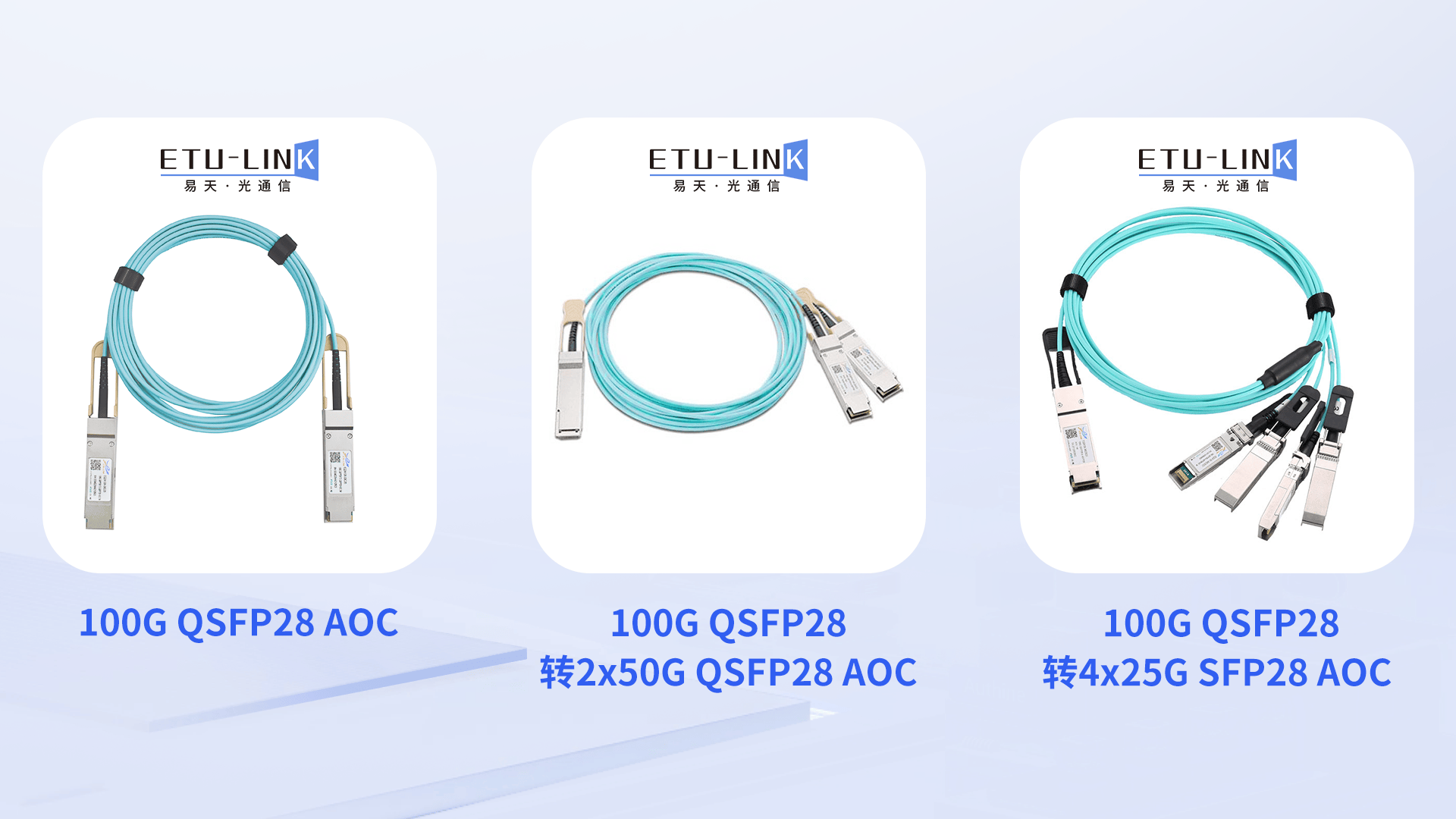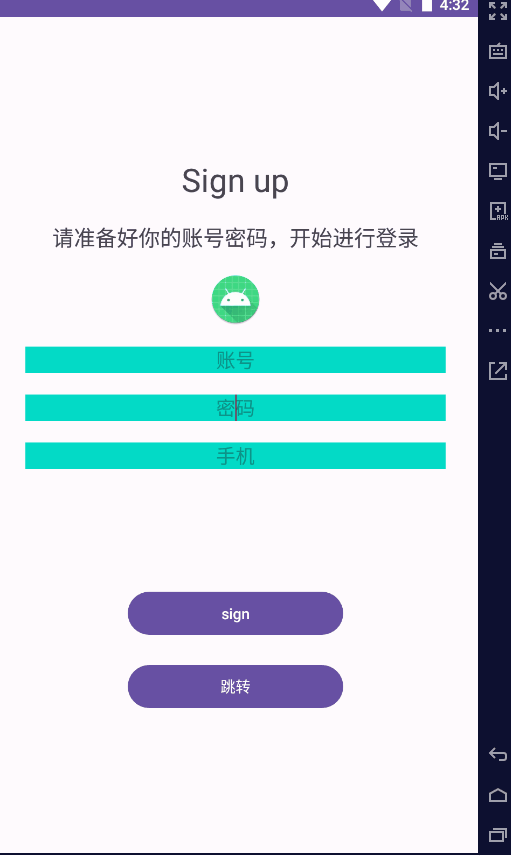一 分布式环境互斥实现
1 数据库锁
1.1 悲观锁 innodb行锁
- 共享锁(S Lock):允许事务读一行数据,具有锁兼容性质,允许多个事务同时获得该锁。
- 排它锁(X Lock):允许事务删除或更新一行数据,具有排它性,某个事务要想获得锁,必须要等待其他事务释放该对象的锁。

X锁和其他锁都不兼容,S锁值和S锁兼容,S锁和X锁都是行级别锁,兼容是指对同一条记录(row)锁的兼容性情况。
Mysql innodb锁的默认操作:
- 我们对某一行数据进行查询是会默认使用S锁加锁,如果硬是要把查询也加X锁使用
@Select("select * from t_goods where id = #{id}")
Goods laodByIdForUpdate(Long id);
-
读的时候硬是要加x锁
@Select(“select * from t_goods where id = #{id} for update”)
Goods laodByIdForUpdate(Long id); -
当我们对某一行数据进行增删改是会加X锁
1.2 乐观锁
乐观锁是相对悲观锁而言的,乐观锁假设数据一般情况下不会造成冲突,所以在数据进行提交更新的时候,才会正式对数据的冲突与否进行检测,如果发现冲突了,则返回给用户错误的信息,让用户决定如何去做。
直接用:表中添加一个时间戳或者版本号的字段来实现,update account set version = version + 1 where id = #{id} and version = #{oldVersion} 当更新不成功,客户端重试,重新读取最新的版本号或时间戳,再次尝试更新,类似 CAS 机制,推荐使用。
2 分布式锁
疑问?既然可以使用数据库悲观锁和乐观锁保证分布式环境的互斥!那为什么还要分布式锁!
有的操作是没有数据库参与的,又想分布式环境互斥! 这是就必须使用分布式锁!
2.1 基于数据库的
-
方案1 主键
主键不能重复
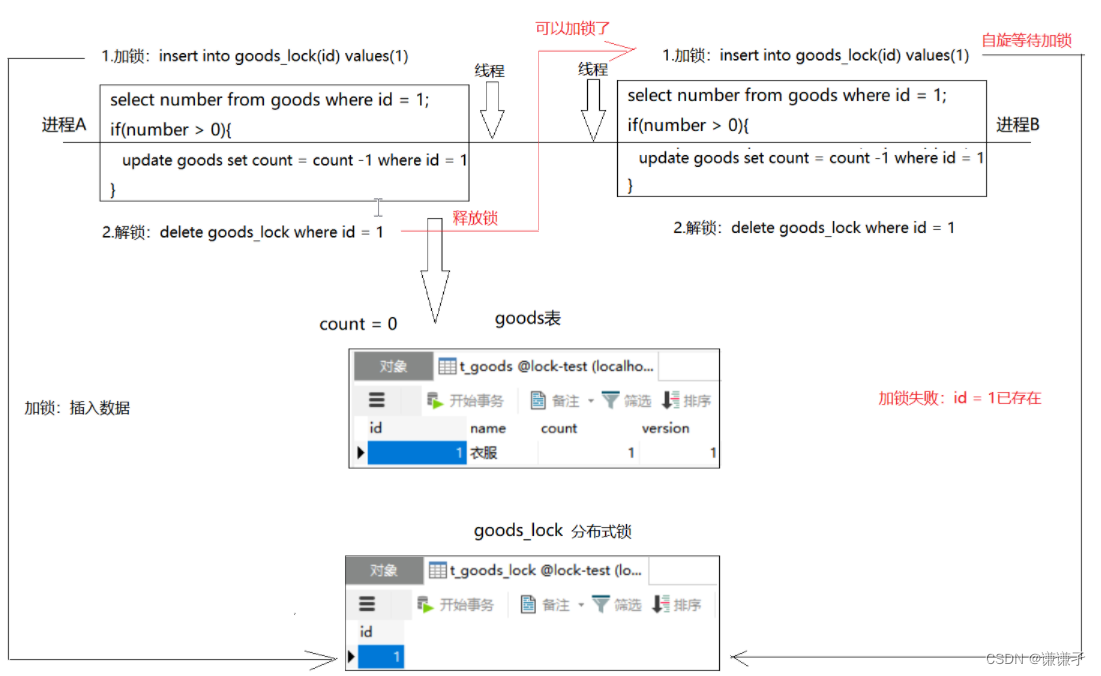
import java.sql.Connection; import java.sql.SQLException; import java.sql.Statement; //基于数据库的分布式锁实现 public class DbGoodsLock { private Long goodsId = null; public DbGoodsLock(Long goodsId) { this.goodsId = goodsId; } /** * 能插入就能获取获取锁 * @return */ public boolean trylock(){ Connection connection = null; try{ connection = JDBCUtils.getConnection(); Statement statement = connection.createStatement(); statement.execute("insert into t_goods_lock(id) values("+this.goodsId+")"); System.out.println(Thread.currentThread().getName()+"加锁,插入数据 goodsId="+goodsId); return true; }catch (Exception e) { //e.printStackTrace(); System.out.println(Thread.currentThread().getName()+"加锁异常====================:"+e.getMessage()); return false; } finally { if (connection != null) { try { connection.close(); } catch (SQLException e) { e.printStackTrace(); } } } } //阻塞获取锁 public void lock(){ if (trylock()) return; try { Thread.sleep(10); System.out.println("尝试获取锁..."); } catch (InterruptedException e) { e.printStackTrace(); } lock(); } //释放锁 public boolean unlock(){ Connection connection = null; try{ connection = JDBCUtils.getConnection(); Statement statement = connection.createStatement(); statement.execute("delete from t_goods_lock where id = "+goodsId); System.out.println(Thread.currentThread().getName()+"解锁,删除数据 goodsId="+goodsId); return true; }catch (Exception e) { System.out.println(Thread.currentThread().getName()+"解锁异常====================:"+e.getMessage()); //e.printStackTrace(); return false; } finally { if (connection != null) { try { connection.close(); } catch (SQLException e) { e.printStackTrace(); } } } } } -
方案2
唯一字段不能重复,和上面原来一样
-
l 数据库是单点?搞两个数据库,数据之键双向同步,一旦挂掉快速切换到备库上。 主备切换
-
l 没有失效时间?只要做一个定时任务,每隔一定时间把数据库中的超时数据清理一遍。
-
l 非阻塞的?搞一个 while 循环,直到 insert 成功再返回成功。
-
l 非重入的?在数据库表中加个字段,记录当前获得锁的机器的主机信息和线程信息,那么下次再获取锁的时候先查询数据库,如果当前机器的主机信息和线程信息在数据库可以查到的话,直接把锁分配给他就可以了。
n 获取:再次获取锁的同时更新count(+1).
n 释放:更新count-1,当count==0删除记录。
l 非公平的?-mq
数据库实现分布式锁,一般都很少用,因为对于数据库来说压力比较大,而且性能效率也不是很好,而且想实现公平锁,重入锁太麻烦了
2.2 redis
方案1:原生
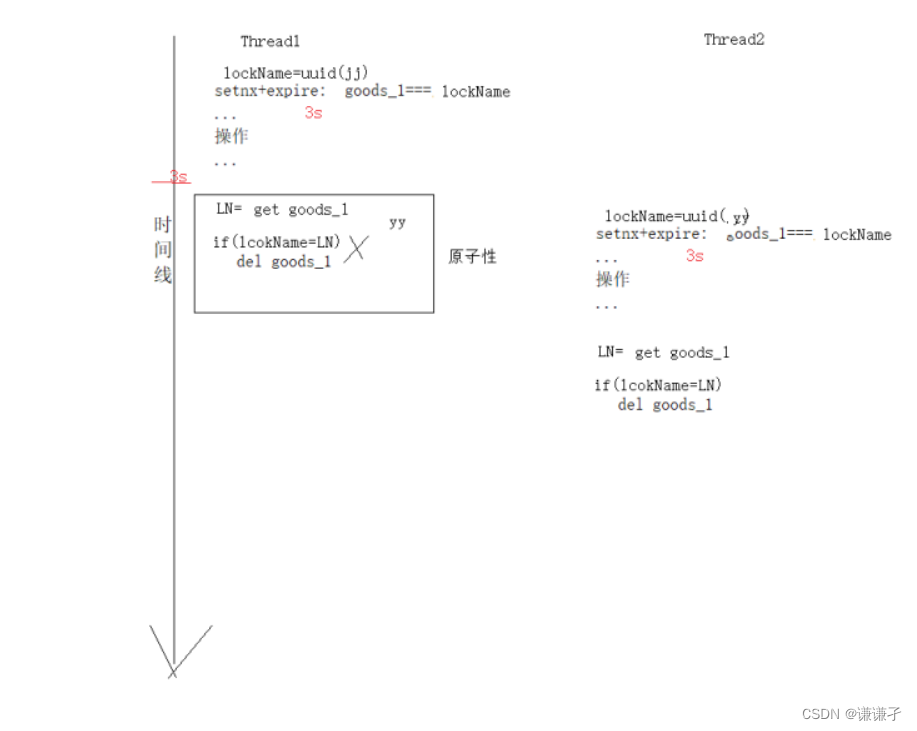
1 setnx(如果不存在才设置成功)+del没有可以就添加 setnx goods_id = 1 del goods_id
2 expire+watchdog续约时间(不好做,我不做)
3 value是uuid,获取判断,删除
4 lua脚本
public interface IDistributedLock {
/**
* 自旋上锁
*/
void lock();
/**
* 释放锁
*/
void unlock();
/**
* 尝试获取锁
*/
boolean tryLock();
}
public class RedisLock implements IDistributedLock {
private String resourceName;
private String lockVal; //try del都有用到uuid,所以构造的时候产生一个成员变量
private RedisTemplate redisTemplate;
//不交给spring管理就一般用不了RedisTemplate
//1 不球用了,用原生jedis-台球麻烦了
//2 想办法实现:一个不受spring管理的bean能够获取受spring管理的bean
public RedisLock(String resourceName) {
this.resourceName = resourceName;
this.lockVal = UUID.randomUUID().toString();
ApplicationContext context = ApplicationContextHolder.getApplicationContext();
redisTemplate = (RedisTemplate) context.getBean("redisTemplate");
}
@Override
public void lock() {
if (tryLock())
return;
try {
Thread.sleep(10);
} catch (InterruptedException e) {
e.printStackTrace();
}
lock();
}
@Override
public void unlock() {
//get check del--->lua key value
/*if redis.call('get', KEYS[1]) == KEYS[2] then
return redis.call('del', KEYS[1])
else
return 0
end*/
List<String> params = Arrays.asList(resourceName, lockVal); //goods_1 jfjjfjflfjof
redisTemplate.execute(redisScript(),params);
}
public RedisScript<Long> redisScript(){
DefaultRedisScript<Long> script = new DefaultRedisScript<>();
script.setResultType(Long.class);
//script.setScriptSource(new ResourceScriptSource(new ClassPathResource("redis.lua")));
script.setScriptText("if redis.call('get', KEYS[1]) == KEYS[2] then return redis.call('del', KEYS[1]) else return 0 end");
return script;
}
@Override
public boolean tryLock() {
//uuid setnx expire
//hash K(resourceName) k(uuid) v(count)+
// redisTemplate.opsForHash().putIfAbsent(resourceName,lockVal,1);
// redisTemplate.expire(resourceName,3,TimeUnit.SECONDS);
Boolean result = redisTemplate.opsForValue().setIfAbsent(resourceName, lockVal, 10, TimeUnit.SECONDS);
System.out.println(resourceName);
System.out.println(lockVal);
return result;
}
}
//@Service
public class GoodsServiceImpl_redis_Lock implements IGoodsService {
// @Autowired
// private IDistributedLock lock;
@Autowired
private GoodsMapper goodsMapper;
@Override
public Goods getById(Long id) {
return goodsMapper.laodById(1L);
}
@Override
@Transactional
public void updateNum(Map<String,Object> params) {
Long goodsId = (Long) params.get("id");
Integer num = (Integer) params.get("num");
String resourceName = "goods_"+goodsId;
IDistributedLock lock = new RedisLock(resourceName);
try{
lock.lock();
System.out.println(Thread.currentThread().getName()+" get lock!");
Goods goods = goodsMapper.laodById(goodsId);
Thread.sleep(4000);
System.out.println(goods);
System.out.println(Thread.currentThread().getName()+goods.getCount()+":"+num);
if (goods.getCount()>=num){
goodsMapper.updateNum(params);
System.out.println(Thread.currentThread().getName()+"buy "+num+"!");
}
}catch (Exception e){
e.printStackTrace();
}finally {
if (lock != null) {
lock.unlock();
}
}
}
}
方案2:框架实现
业界也提供了多个现成好用的框架予以支持分布式锁,比如Redisson、spring-integration-redis,redlock redisson,redlock 底层原理!!!1 他们的对比
<dependency>
<groupId>org.redisson</groupId>
<artifactId>redisson</artifactId>
<version>3.2.3</version>
</dependency>
@Value("${spring.redis.host}")
private String redisHost;
@Value("${spring.redis.port}")
private int redisPort;
@Value("${spring.redis.database}")
private int redisdatabase;
@Value("${spring.redis.password}")
private String redisPassword;
@Bean
public RedissonClient redissonClient() {
Config config = new Config();
config.useSingleServer().setAddress(redisHost + ":" + redisPort);
config.useSingleServer().setDatabase(redisdatabase);
config.useSingleServer().setPassword(redisPassword);
RedissonClient redisson = Redisson.create(config);
return redisson;
}
@Service
public class GoodsServiceImpl_redission implements IGoodsService {
@Autowired
private GoodsMapper goodsMapper;
@Autowired
private RedissonClient redissonClient;
@Override
public void updateNum(Map<String,Object> params) {
Long goodsId = (Long) params.get("id");
Integer num = (Integer) params.get("num");
System.out.println(Thread.currentThread().getName()+"enter!");
String resourceName = "goods" + goodsId;
RLock rLock = redissonClient.getLock(resourceName);
try{
rLock.lock();
System.out.println(Thread.currentThread().getName()+" get lock!");
Goods goods = goodsMapper.laodById(goodsId);
System.out.println(goods);
try {
Thread.sleep(1000);
} catch (InterruptedException e) {
e.printStackTrace();
}
System.out.println(goods.getCount()+":"+num);
if (goods.getCount()>=num){
goodsMapper.updateNum(params);
System.out.println(Thread.currentThread().getName()+"buy "+num+"!");
}
}catch (Exception e){
e.printStackTrace();
}
finally {
if (rLock != null) {
rLock.unlock();
System.out.println(Thread.currentThread().getName()+" unlock!");
}
}
}
@Override
public Goods getById(Long id) {
return goodsMapper.laodById(1L);
}
}
2.3 zk
2.3.1 zk理论
2.3.1.1 是什么?
ZooKeeper是Apache下的一个Java开源项目(最初由Yahoo开发, 后捐献给了Apache)。
ZooKeeper的原始功能很简单,基于它的层次型的目录树的数据结构,并通过对树上的节点进行有效管理,可以设计出各种各样的分布式集群管理功能。此外, ZooKeeper本身 也是分布式的。
2.3.1.2 数据库模型
Zookeeper会维护一个具有层次关系的树状的数据结构,它非常类似于一个标准的文件系统,如下图所
示:同一个目录下不能有相同名称的节点

2.3.1.3 节点分类
ZooKeeper 节点是有生命周期的这取决于节点的类型,在 ZooKeeper 中,节点类型可以分为持久节点(PERSISTENT )、临时节点(EPHEMERAL),以及时序节点(SEQUENTIAL ),具体在节点创建过程中,一般是组合使用,可以生成以下 4 种节点类型。 是否持久化,是否有序
- 持久节点(PERSISTENT)与临时节点(EPHEMERAL)
所谓持久节点,是指在节点创建后,就一直存在,直到有删除操作来主动清除这个节点——不会因为创建该节点的客户端会话失效而消失。
和持久节点不同的是,临时节点的生命周期和客户端会话绑定。也就是说,如果客户端会话失效,那么这个节点就会自动被清除掉。注意,这里提到的是会话失效,而非连接断开。另外,在临时节点下面不能创建子节点。
-
顺序节点(SEQUENTIAL) 无序节点
这类节点的基本特性和上面的节点类型是一致的。额外的特性是,在ZK中,每个父节点会为他的第一级子节点维护一份时序,会记录每个子节点创建的先后顺序。基于这个特性,在创建子节点的时候,可以设置这个属性,那么在创建节点过程中,ZK会自动为给定节点名加上一个数字后缀,作为新的节点名。这个数字后缀的范围是整型的最大值。 00010001 00010002 00010003无序节点就是没有顺序
具体组合得到四种:持久有序 持久无序 临时有序 临时无序
2.3.2 入门
2.3.2.1 安装
正常来说应该在linux上面安装,但是现在就在windows安装,学习阶段!
-
官方下载地址:http://mirrors.cnnic.cn/apache/zookeeper/ , 下载后获得,解压即可安装。
-
安装配置: 把conf目录下的zoo_sample.cfg改名成zoo.cfg,这里我是先备份了zoo_sample.cfg再改的名。修改zoo.cfg的值如下:
dataDir=D:/zookeeper-3.4.9/data/data
dataLogDir=D:/zookeeper-3.4.9/data/log
-
启动 :点击bin目录下的zkServer.cmd 这时候出现下面的提示就说明配置成功了。
-
图形界面-ZooViewer:https://blog.csdn.net/u010889616/article/details/80792912
2.3.2.2 代码测试-使用代码创建各种节点
<!-- https://mvnrepository.com/artifact/com.101tec/zkclient -->
<dependency>
<groupId>com.101tec</groupId>
<artifactId>zkclient</artifactId>
<version>0.10</version>
</dependency>
API总结:
-
l new ZkClient(“127.0.0.1:2181”,5000); 创建zookeeper客户端
-
l client.getChildren(“/”):获取子节点 “/”代表根节点
-
l client.createPersistent:创建持久节点
-
l client.createPersistentSequential:创建持久有顺节点,会在path后面增加序号
-
l client.createEphemeral:创建临时节点
-
l client.createEphemeralSequential:创建临时有序节点
-
l client.subscribeChildChanges:订阅子节点的改变
-
l client.subscribeDataChanges:订阅某个节点的数据改变
@Test //持久化节点
public void test1() throws Exception {
//创建客户端
ZkClient client = new ZkClient("127.0.0.1:2181",5000);
//获取根节点
List<String> children = client.getChildren("/");
for (String child : children) {
System.out.println(child); //zookeeper
}
//创建持久节点
client.createPersistent("/zookeeper/createPersistent");
//创建持久顺序节点
String persistentSequential =
client.createPersistentSequential("/zookeeper/createPersistentSequential", "111");
System.out.println("persistentSequential="+persistentSequential);
// /zookeeper/createPersistentSequential0000000003
//创建临时节点
client.createEphemeral("/zookeeper/createEphemeral");
//client.createEphemeral("/zookeeper/createEphemeral"); //重复创建会报错
//创建临时顺序节点
String ephemeralSequential =
client.createEphemeralSequential("/zookeeper/createEphemeralSequential", "111");
System.out.println("ephemeralSequential="+ephemeralSequential);
//关闭
client.close();
}
//测试监听
@Test
public void test3() throws Exception {
//创建客户端
ZkClient client = new ZkClient("127.0.0.1:2181",5000);
if(!client.exists("/yhptest")){
client.createPersistent("/yhptest");
}
//操作节点
client.createPersistentSequential("/yhptest/test","x1");
client.createPersistentSequential("/yhptest/test","x2");
client.createPersistentSequential("/yhptest/test","x3");
client.createPersistentSequential("/yhptest/test","x4");
client.createPersistent("/yhptest/tests","aa");
List<String> children = client.getChildren("/yhptest");
for (String child : children) {
System.out.println(child);
}
//关闭
client.subscribeChildChanges("/yhptest", new IZkChildListener() {
@Override
public void handleChildChange(String s, List<String> list) throws Exception {
System.out.println("子节点改变:"+s);
System.out.println("子节点改变:"+list);
}
});
client.subscribeDataChanges("/yhptest/tests", new IZkDataListener() {
@Override
public void handleDataChange(String s, Object o) throws Exception {
//数据改变
System.out.println("数据改变:"+s);
System.out.println("数据改变:"+o.toString());
}
@Override
public void handleDataDeleted(String s) throws Exception {
System.out.println("数据删除");
}
});
client.delete("/yhptest/tests");
Thread.sleep(2000);
client.close();
}
2.3.3 zk分布式锁-原生
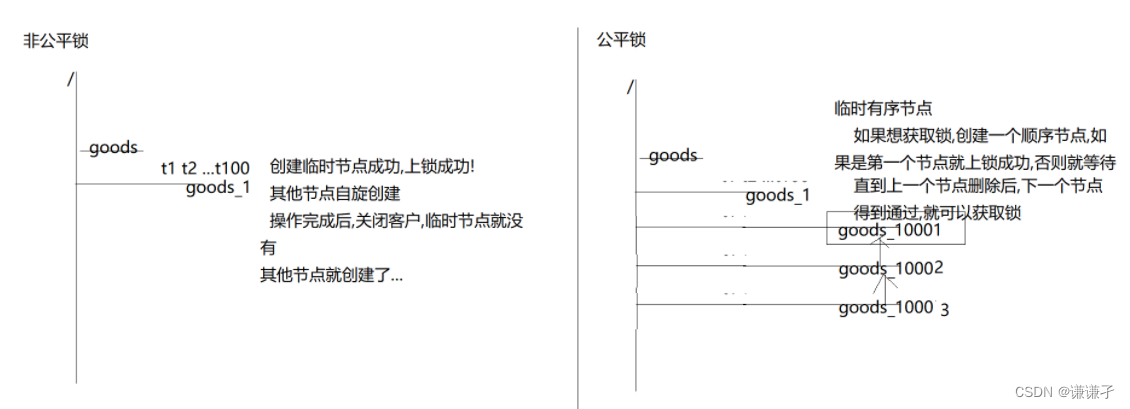
2.3.3.1 非公平锁
根据Zookeeper的临时节点的特性实现分布式锁,先执行的线程在zookeeper创建一个临时节点,代表获取到锁,后执行的线程需要等待,直到临时节点被删除说明锁被释放,第二个线程可以尝试获取锁。
T1 创建临时无序节点goods_2 执行业务逻辑 关闭
T2 创建临时无序节点goods_2 执行业务逻辑 关闭
2.3.3.2 公平锁
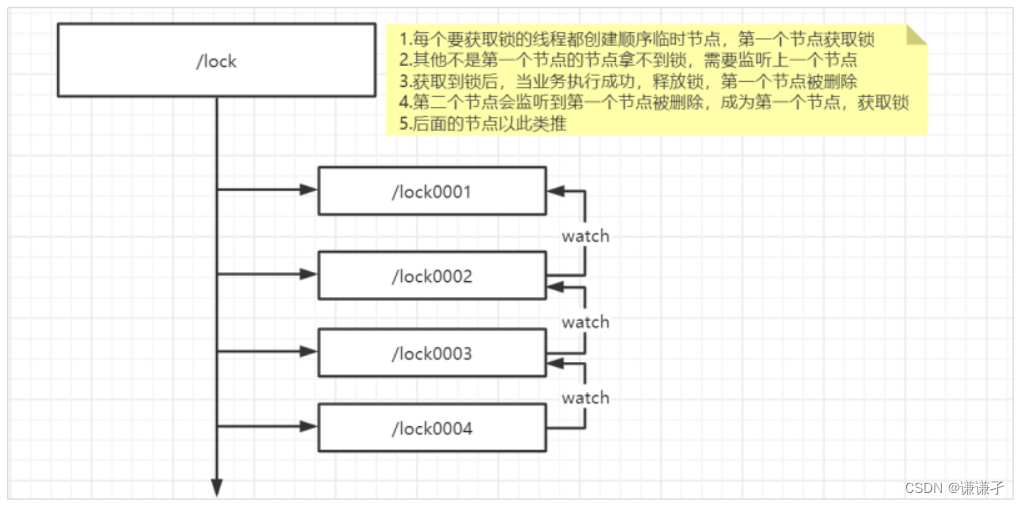
public class ZookeeperDistributedLock implements ronghuanetLock {
ZkClient client = new ZkClient("127.0.0.1:2181",
5000);
CountDownLatch cdl = new CountDownLatch(1); //不为零阻塞住,不让他往下走
//父节点路径
String parent = "";
//当前节点路径
String currentPath = "";
//1 goods
// lock_goods_id 父节点(持久节点)
// lock_goods_id_001
// lock_goods_id_002
@Override
public void lock(String resourceName) {
parent = "/"+resourceName;
//判断父节点是否存在,如果不存在要创建一个持久节点
if (!client.exists(parent)){
client.createPersistent(parent,"root");
}
//前面的节点都处理完成,自己变成第一个节点才加锁成功。
if (!tryLock(resourceName)){
lock(resourceName);
}
}
@Override
public void unlock(String resourceName) {
//自己操作完毕,删除自己,让下一个节点执行。
System.out.println(currentPath);
System.out.println(System.currentTimeMillis());
System.out.println(client.delete(currentPath));
client.close();
}
@Override
public boolean tryLock(String resourceName) {
//创建子节点-临时顺序节点
if (StringUtils.isEmpty(currentPath)){
currentPath = client
.createEphemeralSequential(parent + "/test", "test"); //test0001
}
//如果是第一个节点,就获取到锁了。
List<String> children = client.getChildren(parent);
System.out.println(currentPath+"jjj");
for (String child : children) {
System.out.println(child);
}
Collections.sort(children);
///goods_1/test0000000003jjj
//test0000000003
if (currentPath.contains(children.get(0))){
return true;
}else{
//如果不是第一个节点,监听前一个节点,要再这儿等待,知道被触发,再次判断是否是第一个节点进行返回就OK
String str = currentPath.substring(
currentPath.lastIndexOf("/")+1);
System.out.println(str);
int preIndex = children.indexOf(str)-1;
String prePath = parent+"/"+children.get(preIndex);
//监听上一个节点,如果上一个节点被删除,把秒表设置为 0 (cdl.countDown();),那么当前节点取消等待(cdl.await();)重新获取锁
client.subscribeDataChanges(prePath, new IZkDataListener() {
@Override
public void handleDataChange(String dataPath, Object data) throws Exception {
}
@Override
public void handleDataDeleted(String dataPath) throws Exception {
//让他-1 变为零
cdl.countDown();
}
});
//一直等待,直到自己变成第一个节点
try {
cdl.await();
} catch (InterruptedException e) {
e.printStackTrace();
}
return false;
}
}
}
2.3.4 zk分布式锁 curator框架实现
- 导入jar
<dependency>
<groupId>org.apache.curator</groupId>
<artifactId>curator-recipes</artifactId>
<version>4.1.0</version>
</dependency>
-
配置
@Configuration public class ZkCuratorConfig { //初始化方法start @Bean(initMethod = "start",destroyMethod = "close") //bean声明周期 构造 初始化initMethod 使用 销毁destroyMethod public CuratorFramework curatorFramework(){ //重试策略 RetryPolicy retryPolicy = new ExponentialBackoffRetry(1000, 3); //创建客户端 CuratorFramework client = CuratorFrameworkFactory.newClient("127.0.0.1:2181", retryPolicy); return client; } } -
代码
@Autowired
private CuratorFramework framework;
@Override
public void updateNum(Map<String,Object> params) {
Long goodsId = (Long) params.get("id");
Integer num = (Integer) params.get("num");
String resourceName = "/goods_"+goodsId;
InterProcessMutex mutex = null;
try{
mutex = new InterProcessMutex(framework, resourceName); //1个信号量
mutex.acquire(3, TimeUnit.SECONDS); //获取一个, 自旋(拿不到一直循环) 适应性自选(拿几秒就算乐 )
System.out.println(Thread.currentThread().getName()+" get lock!");
try {
Thread.sleep(1000);
} catch (InterruptedException e) {
e.printStackTrace();
}
System.out.println(System.currentTimeMillis());
//通过商品id获取商品 3
Goods goods = goodsMapper.laodById(goodsId);
System.out.println(goods);
System.out.println(goods.getCount()+":"+num);
if (goods.getCount()>=num){
goodsMapper.updateNum(params);
System.out.println(Thread.currentThread().getName()+"buy "+num+"!");
}
}catch (Exception e){
e.printStackTrace();
}
finally {
if (mutex != null) {
try {
mutex.release();
} catch (Exception e) {
e.printStackTrace();
}
}
}
}
基于数据库基本不用,zk或redis要根据项目情况来决定,如果你项目本来就用到zk,就使用zk,否则redis,redis是项目标配 ,并且都是用框架,而不是原生的!
3 小结
/获取一个, 自旋(拿不到一直循环) 适应性自选(拿几秒就算乐 )
System.out.println(Thread.currentThread().getName()+" get lock!“);
try {
Thread.sleep(1000);
} catch (InterruptedException e) {
e.printStackTrace();
}
System.out.println(System.currentTimeMillis());
//通过商品id获取商品 3
Goods goods = goodsMapper.laodById(goodsId);
System.out.println(goods);
System.out.println(goods.getCount()+”:"+num);
if (goods.getCount()>=num){
goodsMapper.updateNum(params);
System.out.println(Thread.currentThread().getName()+“buy “+num+”!”);
}
}catch (Exception e){
e.printStackTrace();
}
finally {
if (mutex != null) {
try {
mutex.release();
} catch (Exception e) {
e.printStackTrace();
}
}
}
}
**基于数据库基本不用,zk或redis要根据项目情况来决定,如果你项目本来就用到zk,就使用zk,否则redis,redis是项目标配** ,并且都是用框架,而不是原生的!
## 3 小结
# 六 总结
